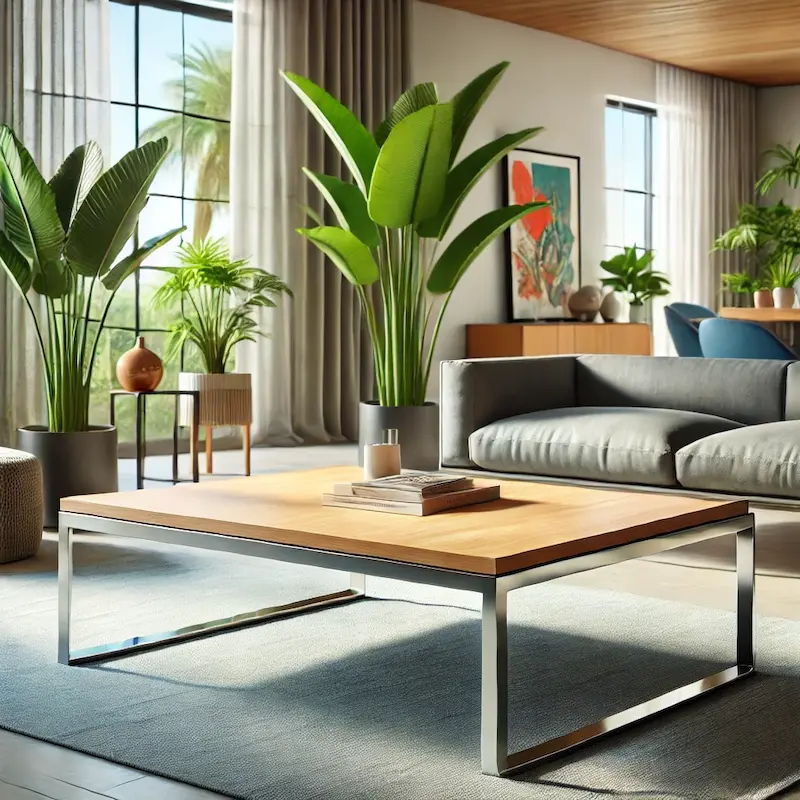A modern coffee table is a low-lying piece of furniture designed to be placed in front of a sofa or seating area, serving both functional and aesthetic purposes in contemporary living spaces.
History and Origins of Modern Coffee Tables
The concept of the coffee table emerged during the late Victorian era in Britain. Initially, these tables were taller and primarily used for serving tea. As coffee gained popularity in the early 20th century, the design evolved into lower tables, aligning with the more relaxed social settings of the time. This shift was influenced by the Ottoman Empire’s use of low tables in tea gardens and the Japanese style of low furniture, which became popular in Britain during the 1870s and 1880s.
Key Features of Modern Coffee Tables
Modern coffee tables are characterized by:
- Materials: A diverse range including wood, metal, glass, and acrylic, often combined to create unique designs. For instance, the Noguchi table features a glass top with a wooden base.
- Design: Emphasis on clean lines, geometric shapes, and minimalistic aesthetics, reflecting mid-century modern and contemporary design principles.
- Functionality: Incorporation of storage solutions like shelves or drawers, and sometimes features like adjustable heights or nesting capabilities for versatility.
- Dimensions: Typically designed to be lower than the seating height, with standard heights ranging from 14 to 20 inches, facilitating ease of use and maintaining visual harmony within the seating area.
Applications of Modern Coffee Tables
Modern coffee tables serve multiple purposes:
- Functional Use: Providing a convenient surface for placing beverages, books, remote controls, and decorative items.
- Aesthetic Appeal: Acting as a focal point in living room design, enhancing the overall décor, and reflecting personal style.
- Space Division: Helping define and organize seating areas within open floor plans.
- Storage: Offering additional storage through built-in compartments, aiding in decluttering living spaces.
Considerations When Choosing a Modern Coffee Table
When selecting a modern coffee table, consider the following:
- Size and Proportion: Ensure the table’s dimensions are proportionate to the seating area, typically about two-thirds the length of the sofa, and appropriate height relative to the seating.
- Material and Finish: Choose materials that complement existing furniture and décor, considering factors like durability and maintenance.
- Functionality: Assess the need for additional features such as storage, adjustable height, or mobility to suit lifestyle requirements.
- Style and Design: Select a design that aligns with personal taste and the room’s aesthetic, whether it be minimalist, industrial, or eclectic.
Conclusion
Modern coffee tables have evolved from purely functional pieces to integral elements of interior design, reflecting cultural shifts and advancements in design philosophy. By considering factors like size, material, functionality, and style, one can select a coffee table that not only serves practical needs but also enhances the aesthetic appeal of contemporary living spaces.
